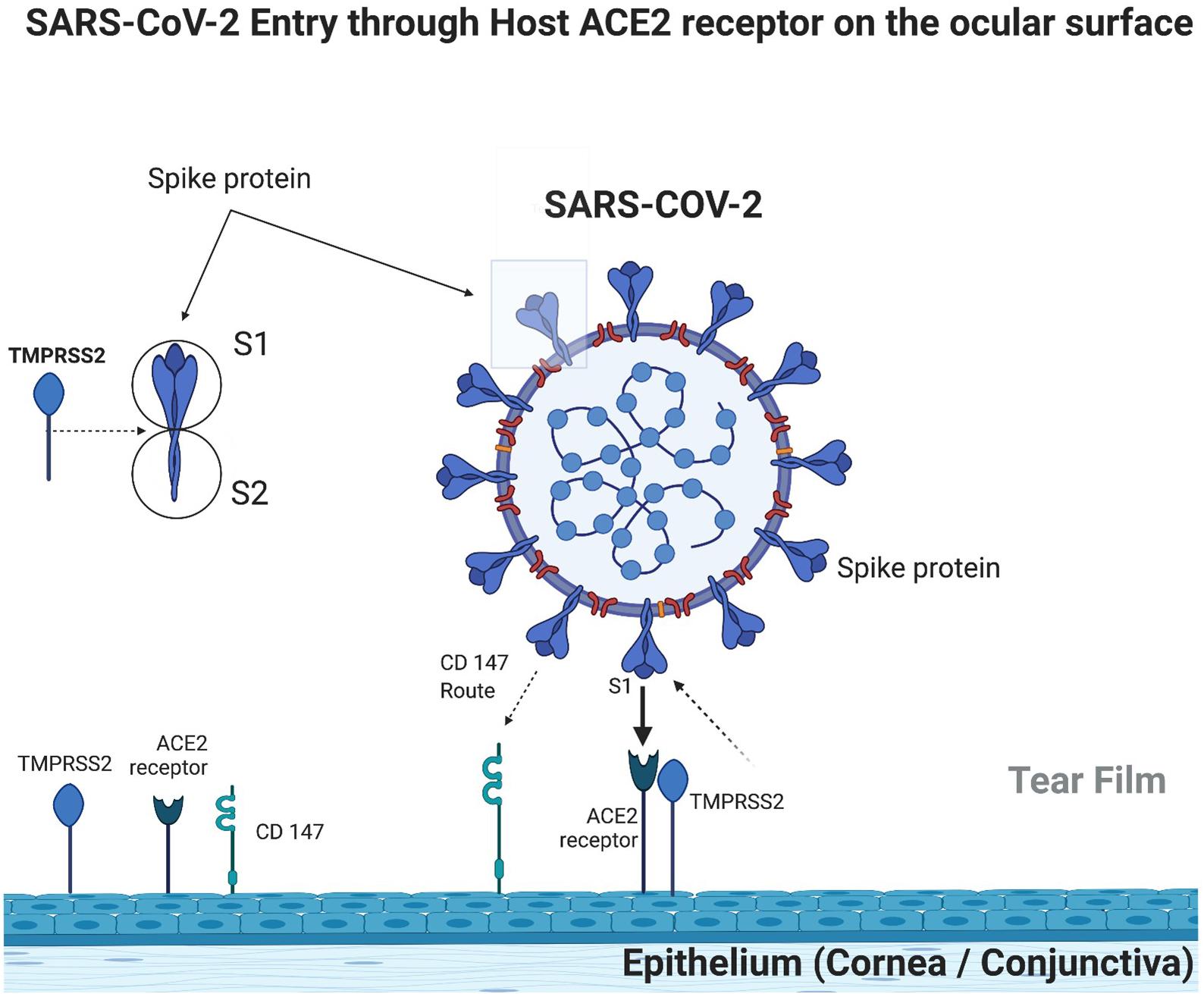
Co-expression of SARS-CoV-2 entry genes in the superficial adult human conjunctival, limbal and corneal epithelium suggests an additional route of entry via the ocular surface.
SARS-CoV-2 uses the angiotensin converting enzyme 2 (ACE2) as a receptor for cell entry, with transmembrane protease serine type 2 (TMPRSS2) responsible for cleaving the spike protein to fuse viral and cell membranes.
Single cell RNA sequencing, ATAC-Seq datasets, immunohistochemical analysis and protein quantification techniques were used in a study to analyse expression of these genes in adult and fetal/embryonic cornea-conjunctival tissues. The study showed that the ACE2 receptor and entry protease TMPRSS2 RNA were co-expressed in human adult conjunctival, limbal and corneal epithelium, but not in corresponding embryonic and fetal tissues upto 21 weeks post-conception. Furthermore, the upstream regulation of ACE2 and TMPRSS2 in superficial conjunctival epithelial cells by several critical pro-inflammatory signals (TNF-α, NFK-β and IFN-ϒ) suggests that SARS-CoV-2 may capitalize on the host’s inflammatory immune response to enhance infectivity in ocular surface tissues.
Thus, it clinically signifies the difference in adult and fetal expression profiles with low symptomaticity and mortality in children infected with SARS-CoV-2. As viral RNA has been detected in ocular swabs of COVID-positive patients, prophylactic eye drops should be explored as a means to stop viral entry through the conjunctival, limbal and corneal epithelium. It also emphasises on the need for protective eye equipment for all health professionals, particularly ophthalmologists who are at increased risk of ocular transmission from asymptomatic patients.
read more –https://www.aao.org/editors-choice/study-hints-that-ocular-surface-epithelium-is-vuln
